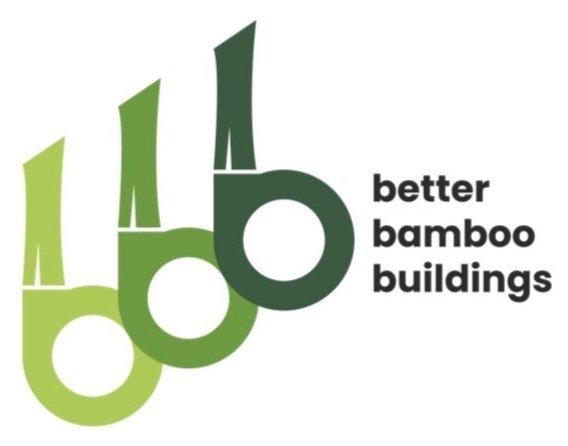BAYOG - Bambusa spinosa in the Philippines
Bamboo architecture is gaining more interest among young designers and builders in Southeast Asian countries, and many are trying to explore different bamboo species and construction options for their projects.
In the Philippines, an endemic bamboo species called Bayog, (Bambusa spinosa) has long been used for construction traditionally. This bamboo species can be found throughout the country, especially near water bodies and it tolerates changes in salinity and seasonal fluctuations in water availability. It had been called with many scientific names, such as Bambusa blumeana luzonensis and Dendrocalamus merillana, among others. However, across the county is commonly known as Bayog.
Bayog has many characteristics similar to the popular Bambusa blumeana (Thorny Bamboo/ Kawayan Tinik). Both Bambusa blumeana and Bambusa spinosa are commonly used in vernacular bamboo houses.
Photo of Bayog clump.
It is one of the most persistent and predictive in relation to growth and lignification of all the endemic bamboo species in the country, which makes it a highly utilised species. The shooting season of Bayog is intermittent, much like Bambusa vulgaris and is mainly dictated by the water content level of the soil and atmospheric humidity throughout the year. It generally takes two months for a shoot to reach its final length and usability attained around the time that a culm reaches three years old. There are usually three emerging shoots per mother culm every calendar year and at times, five is not impossible. And two shooting seasons in one year is not uncommon as well.
Bayog shoot
Bayog is also one of the easiest bamboo species to propagate and the survival rate is quite high. After four months in a nursery and when the main planting material has produced a new culm with its own set of leaves and branches, they are ready to be outplanted. In areas where water availability is consistent such as in riparian areas or beside rice paddy canals, a Bayog clump can teach a basal diameter of 6 centimeters in three calendar years with its youngest culm reaching 12 meters in total length.
Bayog is a clumping bamboo with drooping and culms that grow to an average length of 15 meters and doesn’t normally exceed 20 meters. Relative culm basal diameter is about 8 centimeters and the wall thickness is usually a third of its diameter. The nodes are solitary, the nodal lines and nodal ridge are present with aerial roots especially at the lower nodes much like Dendrocalamus asper rather than Bambusa blumeana. Internodes are relatively smooth; with an average internodal space of 30 centimeters long mid culm, and becomes much closer on the basal end. This bamboo is able to tolerate strong annual typhoon and is able to bend with the wind like a tensioned fishing rod because of its physiology.
Cross section of seasoned Bayog.
For the local bamboo craftsmen, Bayog is most preferred for structural components of traditional houses because of its thick and strong culm. It is being used basic post & beam construction and also as framing for stairways.
Farmers plant bayog close to their houses for easy access. The branches and leaves are also on the upper portion of the culm only, making the lower culm area accessible for clearing and cutting and more rodent free when compared to Kawayan Tinik with its lower thorny branches.
Bayog in a 50 year old traditional house.
In traditional bamboo houses using Bayou as the main structural members, the floors and walls uses the Bambusa blumeana (Kawayang Tinik), because of its smoother and shinier surface. Bayog can also provide very interesting patterns when crafted into balustrades and railings. The combination of the two species of bamboo for the houses makes it like “Malakas (strong) and Maganda (beautiful), synonymous to the ancestral legends that men and women came out of the bamboo.
Bayog is popular for boat makers too, especially to be used as outriggers. Farmers are also using Bayog for arched yoke for their carabaos and ropes to tie farm produce. Its shoots are edible and among the favorite local delicacy for its spicy flavor.
Bayog applied in building construction
Bayog is an available and affordable species that is local, versatile and workable. How can we as bamboo advocates and proponents improve the use of this resource to our current and future needs?
Here are some suggested initiatives:
Bayog has character and strength when crafted well - it brings an opportunity for designers to explore this alternative bamboo for its natural culm beauty, not just for main structure but also for secondary building components like screens, balustrading
Its price per pole is generally cheaper than popular or introduced species, and thus can provide a more economical solution to construction on projects.
It can be used for areas with high exposure typhoons and its flexibility to be bend can be a good use for designers that would like to do more organic shapes and forms in their design.
The availability of Bayog throughout the country makes transportation cost more economical and has less carbon footprint, as compared to sourcing poles that are only thriving on distant islands.
Further studies and tests should carried out and shared on the physical and mechanical properties of Bayog.
This article is written by: - Alvin Tejada & Ewe Jin Low with input from Herbie Teodoro.
We welcome any information on Bayog from our readers and this article, like many of our other articles, can be updated and improved with your valued contribution.












